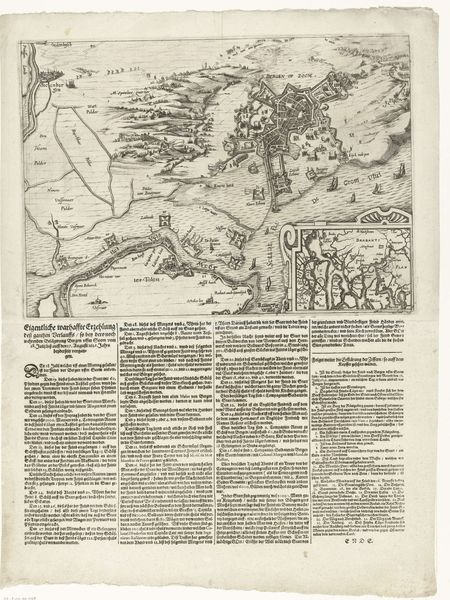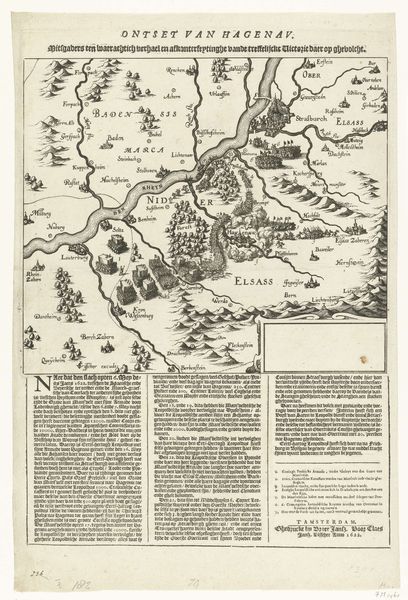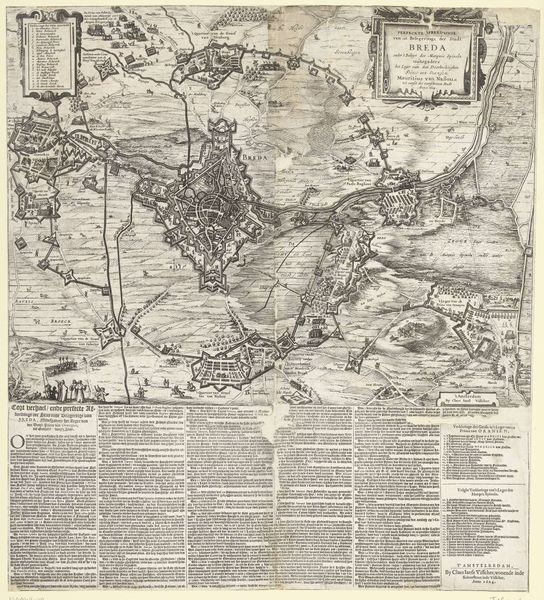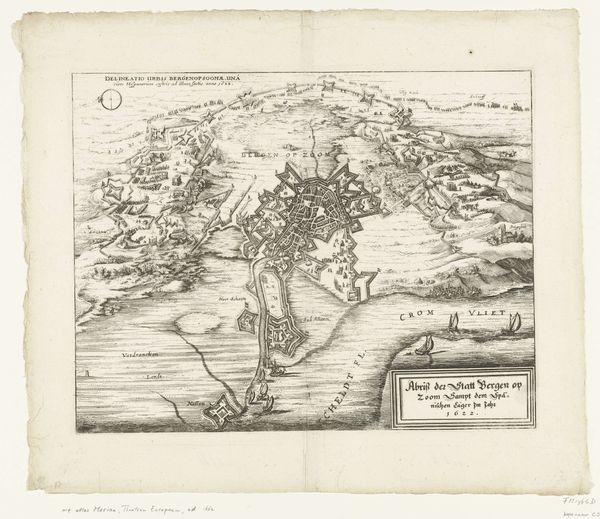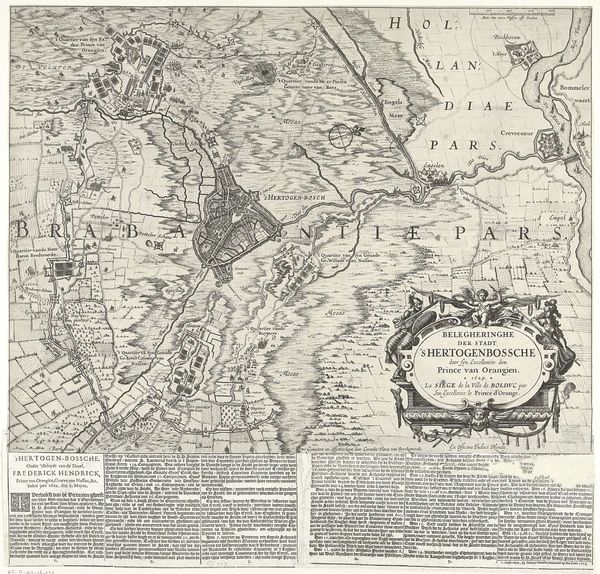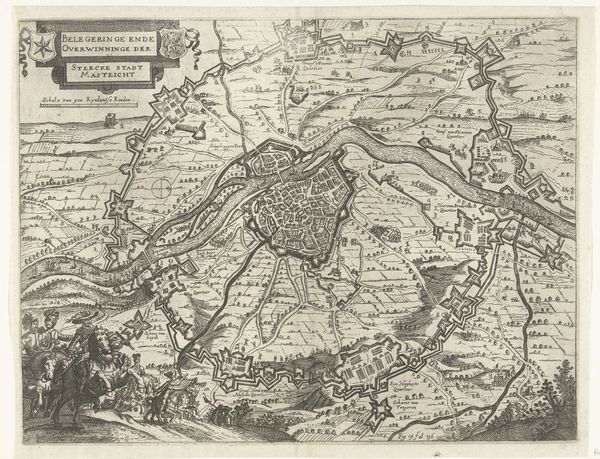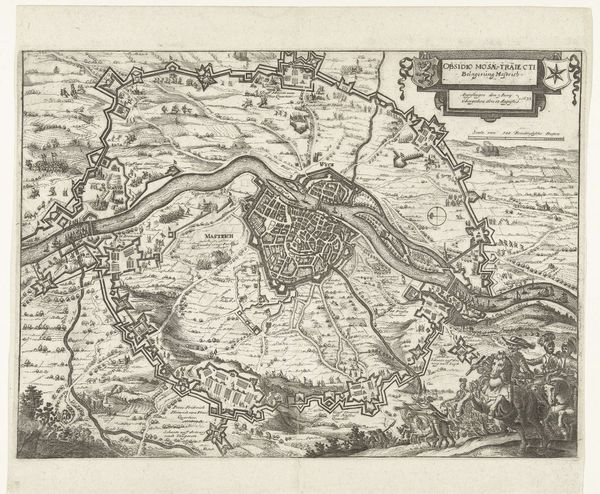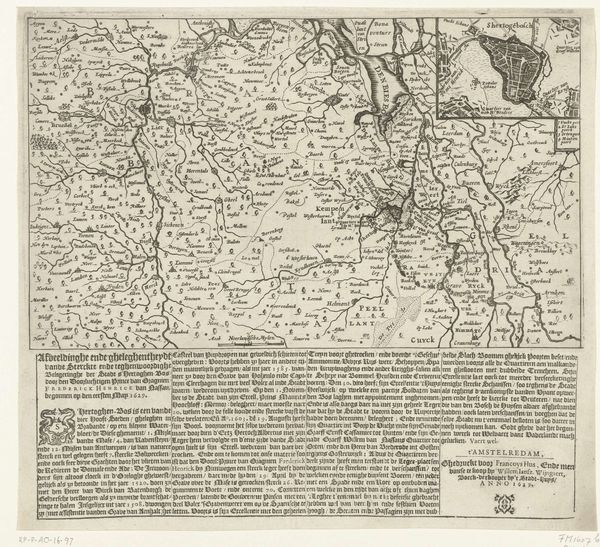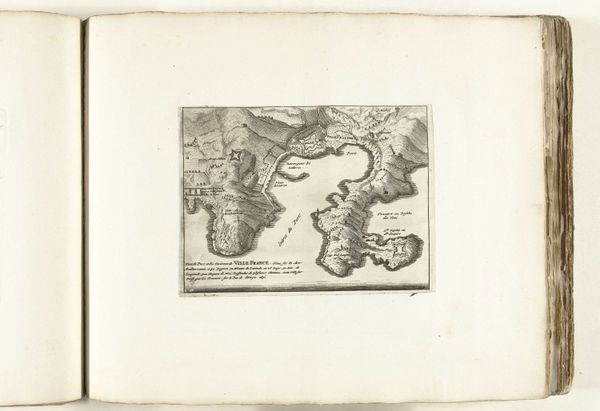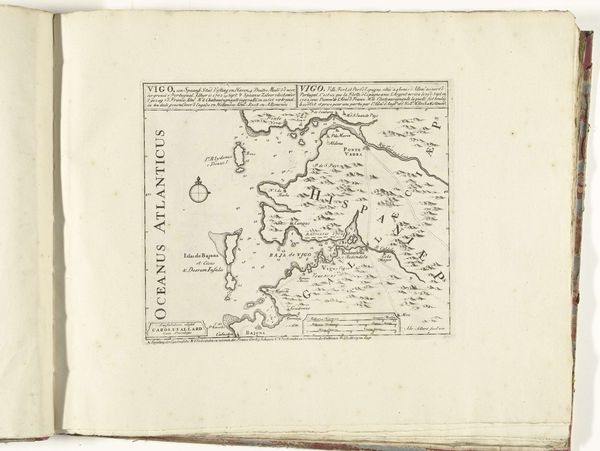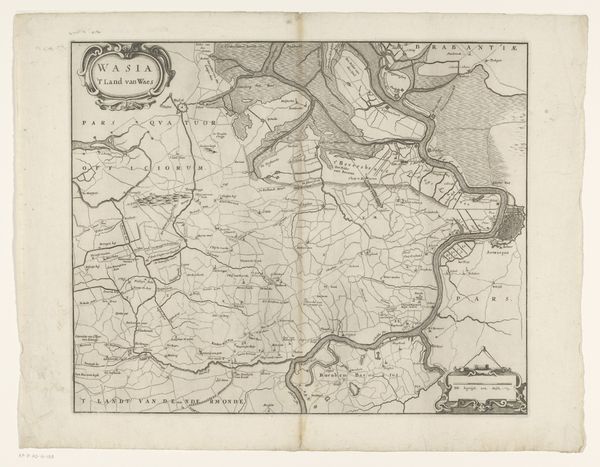
print, engraving
#
dutch-golden-age
# print
#
old engraving style
#
history-painting
#
engraving
Dimensions: height 330 mm, width 355 mm
Copyright: Rijks Museum: Open Domain
Editor: This engraving, "Begin van het beleg van Breda door Spinola, 1624" created in 1624 by Claes Jansz. Visscher, shows the siege of Breda. I'm struck by the incredible detail for something of this scale. It almost looks like a strategic game board. What do you see when you look at this piece? Curator: What resonates most is how maps, like this one, were powerful cultural artifacts. This isn't just geography; it’s propaganda, history, and identity all rolled into one. Look closely – the symbols aren't arbitrary. Each little house, tree, and division carries a deliberate weight. Editor: So, it's not just about accuracy? Curator: Accuracy was secondary to conveying power, dominance and even a particular *narrative*. Consider how the placement and size of Spinola's forces, for example, influences the viewer’s understanding of the event. Visual language reinforced political messaging. Can you spot any specific details which jump out? Editor: The lettering does—some seem bigger or smaller than others. It gives me a sense of a story, some place names feel more important than others... Curator: Exactly! Text size, font – these are all visual cues indicating hierarchy. The map speaks about control, not just of territory but of information. It offers a particular interpretation for audiences at the time. It also informs how we remember it. Editor: That’s fascinating. It's a very different idea of what a map is, beyond just navigation. I had not considered it as a piece to persuade or create cultural memory. Curator: Right. Today, it prompts reflection on the intersection of art, politics, and enduring power of visual symbols across generations.
Comments
No comments
Be the first to comment and join the conversation on the ultimate creative platform.

